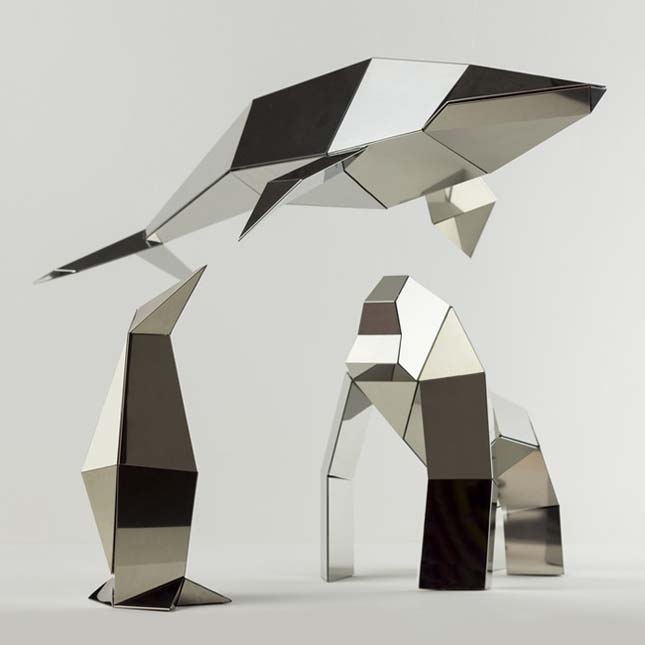Royal College of Art Degree Show 2012
Eight standouts from the annual graduate show

Each year the Royal College of Art degree show highlights some of the brightest emerging design talent across a variety of disciplines. London’s RCA prides itself on its international reputation, attracting creative minds from all over the world to learn from its renowned professors and industry experts. From textiles to vehicle design, we always look forward to the annual output of innovative and inspiring works.
Below are eight projects culled from this year’s RCA Degree Show on view at the college’s Kensington Building, selected for their aesthetic beauty, innovative use of materials and inherently tactile nature.
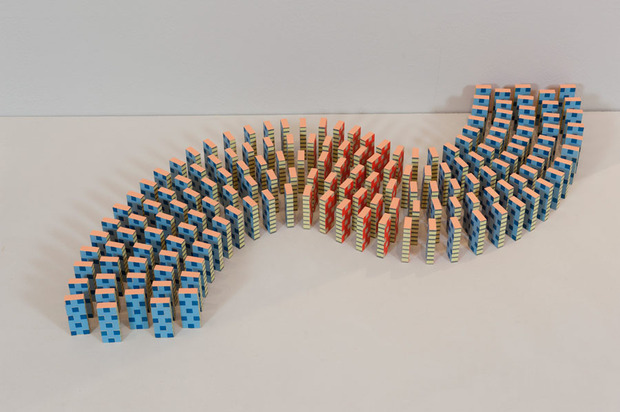
Kaori Takasu
Kaori Takasu graduated from the Textiles Platform without a piece of fabric or thread in sight, but instead an installation of printed blocks, both wall-mounted and set up on a table like a complex set of dominoes. These colourful installations were, according to Takasu, inspired by a trip to Detroit, “where abandoned buildings, homes, streets stood still ghostly against nature’s movement.” We love the boldness of Kaori’s designs, which she describes as blocks that build up “to form a bigger pattern together, like a cityscape.”

Alei Verspoor
At the more practical end of the textiles spectrum is Alei Verspoor‘s “Pack!”—a modular system for self-assembled travel bags that also function as storage or seating. Verspoor’s work focuses on the discipline of “Design for Disassembly,” with each of the Pack elements made out of a single material, which, as he explains, “makes it easy to replace and recycle components.” Alei describes Pack as a pattern in how it’s constructed. Through “the weaving and folding and assembling of differently colored and printed components, three-dimensional check patterns are created, that continue to evolve over time, as components are replaced or added,” he says.
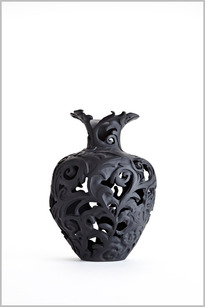
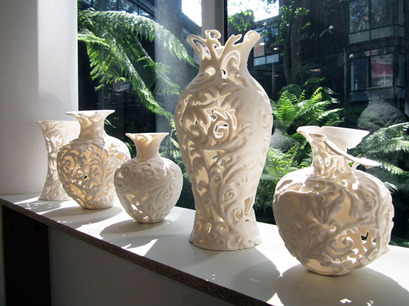
Tamsin Van Essen
We wrote about Van Essen‘s work back in 2008 when she exhibited at Designers Block as part of the London Design Festival. Now this talented ceramic designer has graduated from the RCA with a project entitled “Vanitas Vanitatum—a garniture of beauty and decay.” This collection of ornate crumbling vases is inspired by the beauty and decay seen in Dutch “vanities” paintings and in Dickens’ descriptions of Miss Havisham’s Satis House. Tamsin says of the work, “I aim to capture the fragile moment when abundance turns to decay. Frozen in time just at the point of disintegration, the vases represent an ornamental memento mori.”
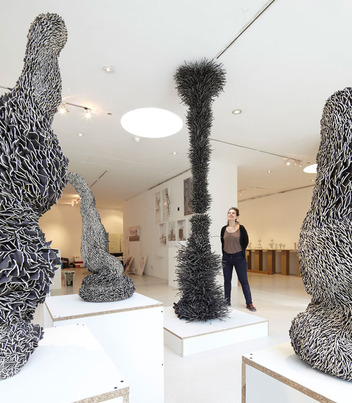
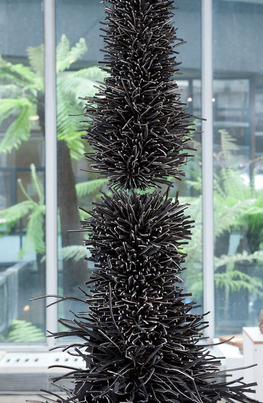
Zemer Peled
We were impressed by the scale and drama of Zemer Peled‘s ceramic installations, which appeared to grow out of the ground and the ceiling like earthen stalactites and stalagmites. The collection of sculptural forms entitled “I am walking in a forest of shards” is accompanied by the text, “I went to see the dead forest; it was the most beautiful, quiet and peaceful place I have ever been. Silence. No sound of animals, or wind blowing on the trees, no evidence left of the catastrophe that happened there only a few weeks earlier. I was walking alone a forest of black naked trees.” There is a wonderful sense of storytelling in these mysterious organic forms made out of thousands of ceramic shards assembled from smashed black and white fired clay. Zemer describes her work as “creating new life out of the chaos of broken fragments.”

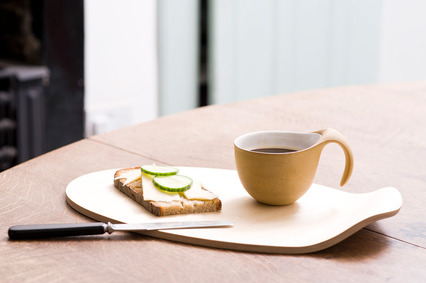
Sissel Wathne
After the poetic drama of Van Essen and Peled the practical comfort of Sissel Wathne‘s ceramic designs offer a pleasant contrast. A collection of objects called “Hygge—Nordic tools for everyday living” offers a beautiful interaction with daily objects. The cups and bowls ask to be held through the curvature of their form, especially the handles, which “embrace the hand” as Sissel says. She describes her designs as an “invitation to use,” and in Danish “hygge” means comfortable, cosy, homely and friendly.
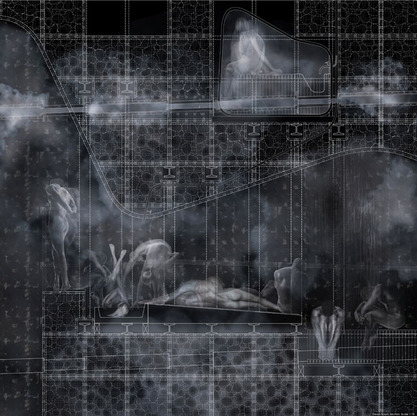
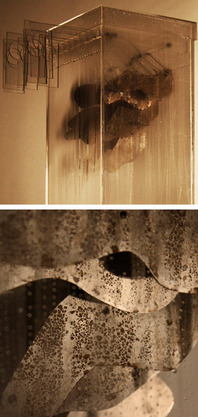
Jack Wates
Over on the Architecture Platform a freestanding bathtub caught our attention and with it Jack Wates‘ project “The Hackney Bathhouse.” Inspired by the British weather, Jack imagines a building constructed with water as a “complex living architectural material.” Through a process of distillation and condensation, taken from the Combined Cooling Heating & Power (CCHP) technology in the adjacent Olympic Energy Center, the water not only heats and cools this “palace of sensation,” but also cleans up its water source, the polluted River Lea.

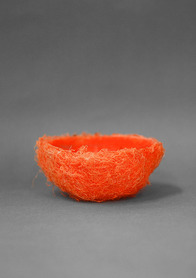
Polyfloss
The RCA’s IDE Platform stands for Innovation Design Engineering and directs students towards practical solutions for contemporary global issues. The “Polyfloss Factory” is a prime example of how IDE works, which is a collective project involving four students, Audrey Gaulard, Emile De Visscher, Christophe Machet and Nicholas Paget , who have designed a new system for recycling plastic. Their micro-factory process allows any “skilled maker to create high-value objects from a free material.” The colorful “Polyfloss”—made from waste polypropolene—has a candy floss-type texture and can be used to make anything from headphones to vases. What’s more, the “Polyfloss Factory” is a closed loop system, meaning any product can be put back in the machine and made into something new again.
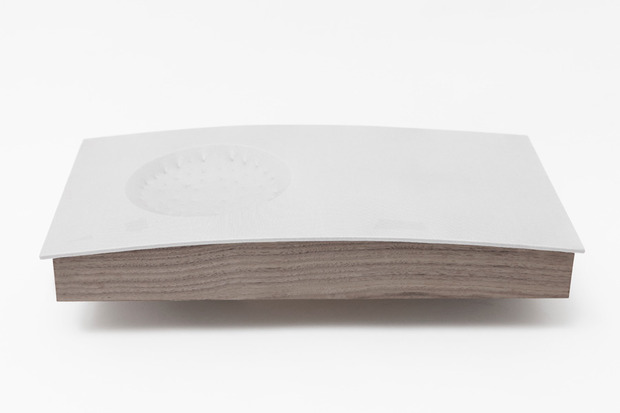
Eunhee Jo
Also in IDE, conforming to the ongoing theme of tactility around the RCA Show, was Eunhee Jo‘s “New Tangible Interfaces” project, which stood out for its minimal design and soft approach to technology. Eunhee has designed a new sound system, TTI (Tangible Textural Interface), that’s covered in a soft silky textile. The system is controlled by swiping finger movements across the surface in much the same way as we currently use smartphones. Eunhee describes her product as redefining the role of surfaces in future lifestyles, to create “physical sensorial experiences, both delightful and functional.”


